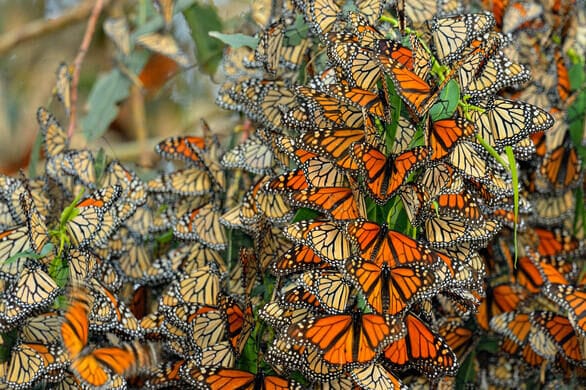A team of scientists reports a link between human-driven climate change and the declines observed in butterfly populations in the US.
Earth.Org takes a closer look.
—
You may be aware that sweeping declines have been reported in insect populations by many recent studies. The truth, as always, is much more complex, as described in our review article on the situation: Insect Decline: “Death By A Thousand Cuts”.
Nonetheless, some species and families are indeed in steep decline and it is important for us to understand why, especially when we are speaking of pollinators and other species vital to ecosystem health.
A recent study published in Science aggregated monitoring data from over 70 locations spanning the western US. What they found was a 1.6% annual reduction in the number of individual butterflies counted over the past four decades. Causes for this are many, but a stronger correlation was found with warming during fall months, attributed to anthropogenic climate change.
It is important to understand that 1.6% is not a little, it is massive. The once ubiquitous monarch butterfly used to carpet California and fly in orange and gold clouds – now they are sparse and scattered.

Monarch Butterflies cluster roosting at Pismo Beach. Don Johnston_AH / ALAMY
The changes that take place in the planet’s geology and ecology usually occur over timescales far beyond our lifespans, and thus go by unnoticed. When we start to notice them, that means things are moving incredibly fast, and that can only mean a massive disruption of the incredibly gentle climate of the past 12,000 years.
Let us put all of our efforts into limiting waste and encouraging cleaner energy generation. The movement has already begun, but the sooner the transition, the less damage will be done.
This article was written by Owen Mulhern.
You might also like: Renewables on the Rise










![The Statistics of Biodiversity Loss [2020 WWF Report]](https://u4d2z7k9.rocketcdn.me/wp-content/uploads/2020/12/lprwinkyTHB-544x306.jpg)





